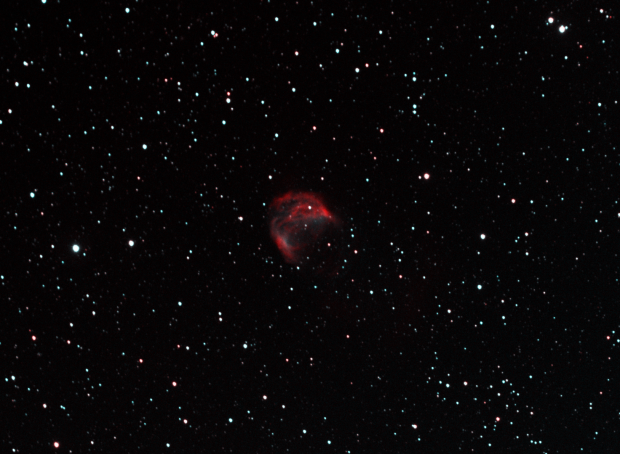
Contrary to appearance, a planetary nebula is not a planet but a emission nebula, an expanding shell of glowing ionized gas discharged from a red giant star at the end of its life. At this late stage of stellar evolution the star runs out of fuel to burn, with the result that the outer layers are blown away and expand into space typically in the shape of a ring or bubble. At the centre of the planetary nebula is the remnant of the star, which is left as a White Dwarf.
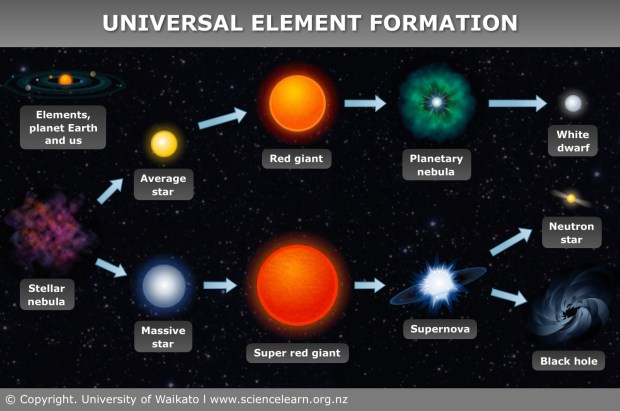
The term “planetary” nebula is therefore completely misleading and derives its name from none other than William Herschel, in an era when such objects were thought to look like planets. We now believe some 10,000 planetary nebulae exist throughout the Milky Way, though only 1,500 have been identified (see NASA HST images below), including M57 the Ring Nebula and M27 the Dumbbell Nebula both popular amongst astrophotographers.
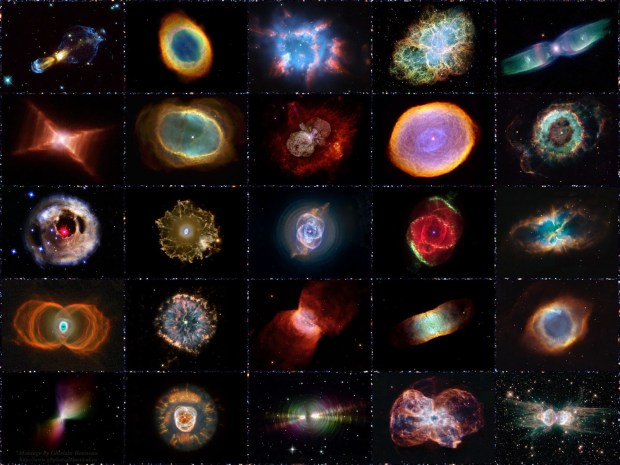 Such objects are usually short lived and unfortunately small and faint, making them a challenge for smaller telescopes and Bortle 5-6 skies, such as I have at Fairvale Observatory. However, I recently decided to return to the Medusa Nebula, a planetary nebula which I previously had imaged as a test in February 2018. On that occasion the integration time was limited to only 75 minutes (see below), now the objective was to build on the previous data and thereby hopefully improve the image quality.
Such objects are usually short lived and unfortunately small and faint, making them a challenge for smaller telescopes and Bortle 5-6 skies, such as I have at Fairvale Observatory. However, I recently decided to return to the Medusa Nebula, a planetary nebula which I previously had imaged as a test in February 2018. On that occasion the integration time was limited to only 75 minutes (see below), now the objective was to build on the previous data and thereby hopefully improve the image quality.
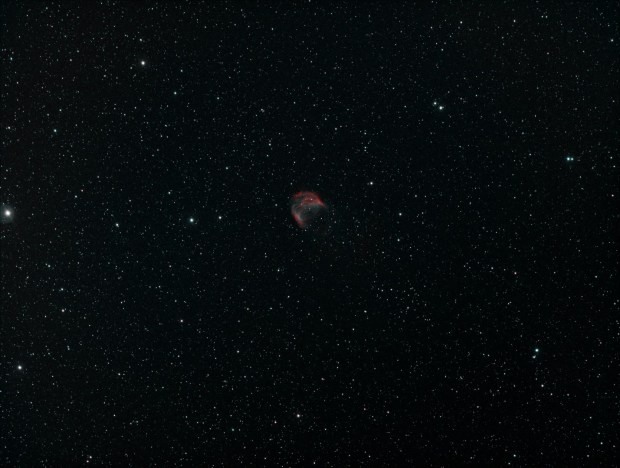
Combining the data from 2018 with that of 2020 resulted in a significant increase in total integration time to just over 5-hours, with the impact on the final image clearly noticeable (see top-of-the-page cropped and below uncropped – showing the difference in alignment between pre-plate solving 2018 & 2020 data), mainly in the form of reduced noise and better colour saturation. I am a little surprised that the improvement was not greater but perhaps it’s a case of either (a) considerably more time is still required, particularly in the weak OIII wavelength, or (b) it’s really too much of a challenge for my equipment?
However, looking at other images of the Medusa Nebula and considering its size and very low surface brightness, it’s obvious this is one of the more difficult planetary nebula objects to image and all things considered I’m happy with outcome new of this new version.
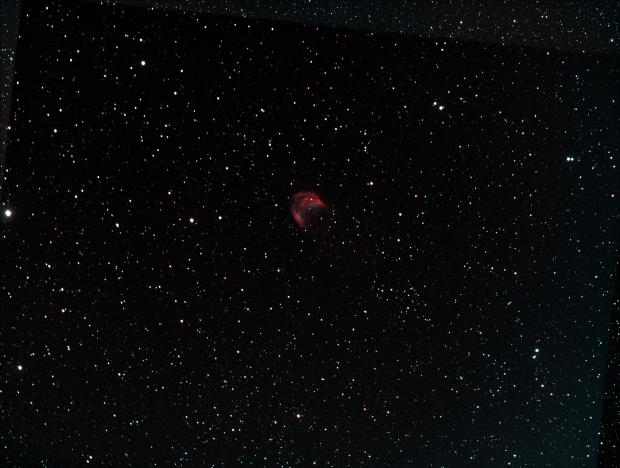
| IMAGING DETAILS | |
| Object | The Medusa Nebula AKA Abell-21, Sharpless 2-274 or PK205+14.1 |
| Constellation | Gemini |
| Distance | 1,500 light-years |
| Size | Approx.. 12’ x 9’ |
| Apparent Magnitude | +15.99 |
| Scope | William Optics GT81 + Focal Reducer FL 382mm f4.72 |
| Mount | SW AZ-EQ6 GT + EQASCOM computer control & Cartes du Ciel |
| Guiding | William Optics 50mm guide scope |
| + Starlight Xpress Lodestar X2 camera & PHD2 guiding | |
| Camera | ZWO1600MM-Cool mono CMOS sensor |
| FOV 2.65o x 2.0o Resolution 2.05”/pix Max. image size 4,656 x 3,520 px | |
| EFW | ZWOx8 + ZWO LRGB & Ha OIII SII 7nm filters |
| Capture & Processing | Astro Photography Tool + PHD2 + Deep Sky Stacker & Photoshop CS3 |
| Image Location & Orientation | Centre RA 05:55:38 DEC 01:59:40 @20.49h
Image rotated 180o for presentation Top = South |
| Exposures | 37 x 300 sec Ha, 25 x 300 sec RGB
Total Time 5hr 10 min |
| @ 139 Gain 21 Offset @ -20oC | |
| Calibration | 5 x 300 sec Darks 20 x 1/4000 sec Bias 10 x Ha & OIII Flats
@ ADU 25,000 |
| Location & Darkness | Fairvale Observatory – Redhill – Surrey – UK Typically Bortle 5-6 |
| Date & Time | 11th February 2018 + 2nd & 3rd March 2020 @ +21.00h |
| Weather | Approx. 5oC RH <=75% 🌙 +29% waxing |



Pingback: Reflections 2020 | WATCH THIS SPACE(MAN)